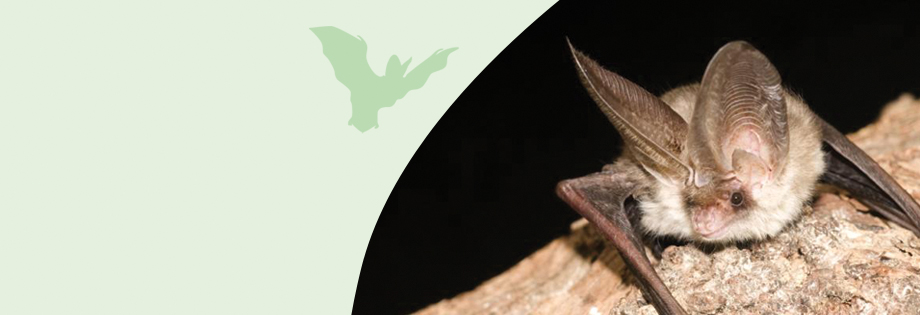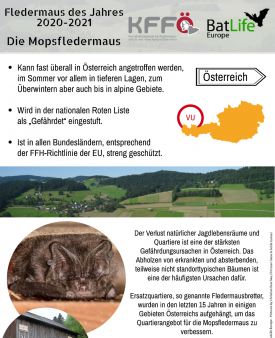Brown long eared (© Hugh Clark / Bat Conservation Trust)
We try to make our publications available to everyone but unfortunately have limited resources. If you have time to help translate any of the information please email our administrator at batlifeeurope@bats.org.uk
Bat of the Year 2020-21 Infographics - Barbastella barbastellus
Bat of the Year 2020-21 Infographics - Barbastella barbastellus
BatLife Europe's partner organisations voted the Barbastelle as Bat of the Year 2020-21. There will be several infographic documents published in this time so please check back later for more.
Species Profile
Species Profile
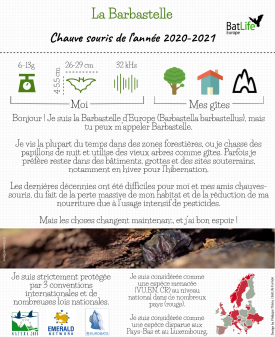
Available in
the following
languages:
Bat of the Year 2018-19 Infographics - Rhinolophus hipposideros
Bat of the Year 2018-19 Infographics - Rhinolophus hipposideros
General
General
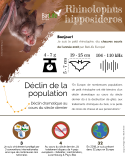
Available languages:
Reproduction
Reproduction
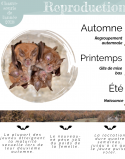
Available languages:
Diet
Diet
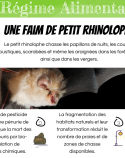
Available languages:
BatLife Europe Resources
BatLife Europe Resources
Guidelines for BatLife Europe collaboration - These are the criteria we use to decide on BatLife Europe’s involvement in conservation or research projects.
Guidelines for BatLife Europe Supporting Letter Requests - if you're a partner NGO and would like to ask for BatLife Europe's support with an issue, please read our guidelines.
The Indicator of Change in European Bat Populations
The Indicator of Change in European Bat Populations
Biodiversity indicators convey clear messages to policy makers and the public. The well-established indicators of change in European bird and butterfly populations have been very effective in raising public awareness of the issues that affect these groups. In 2011, BatLife Europe partners collaborated to develop the first pilot indicator of changes in European bat populations. The European Environment Agency (EEA) commissioned the work, provided funding for ten teams from nine countries to work together, and in 2014 published the results as an EEA technical report. This attracted widespread international interest in bats.
The prototype indicator suggested bat populations had increased at hibernation sites between 1993 and 2011, with nine species showing a significant positive trend, one species a significant decline, and two species no trend. BatLife Europe wants to repeat and improve this work. We want to include more countries, more species, to extend the scope of the indicator and increase our confidence in its message.
If you coordinate a national or sub-national bat survey and would like to participate in the next update of the indicator please contact batlifeeurope@bats.org.uk.
Suggested sources:
Haysom, K.A., Dekker, J., Russ, J., Van der Meij, T., Van Strien, A., 2014. European BatPopulation Trends. A Prototype Biodiversity Indicator. EEA Technical Report No.19/2013 - link to report
Van der Meij T., A. J. Van Strien, K. A. Haysom, J. Dekker, J. Russ, K. Biala, Z. Bihari, E. Jansen, S. Langton, A. Kurali, H. Limpens, A. Meschede, G. Petersons, P. Presetnik, J. Prüger, G. Reiter, L. Rodrigues, W. Schorcht, M. Uhrin & V. Vintulis, 2014. Return of the bats? A prototype indicator of trends in European bat populations in underground hibernacula. Mammalian Biology 80: 170–177 - link to article
TRIM, statistical program Trends and Indices for Monitoring data, its manual and useful references are available here
BirdSTATs, The Species Trends Analysis Tool for birds, adapted for bats is an open source Microsoft Access database for the preparation and statistical analysis of bat counts data in a standardised way. It is programmed to use and automatically run the program TRIM - link to download
Basic technical information for national/regional bat hibernation index calculation can be found here
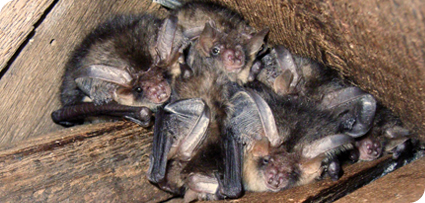
Brown long eareds in a roof corner (© John Haddow)
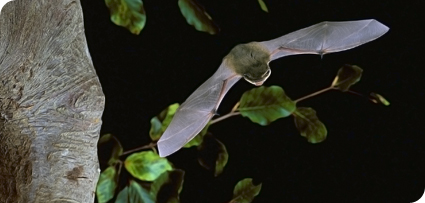
Pipistrelle in flight (© Hugh Clark / Bat Conservation Trust)

